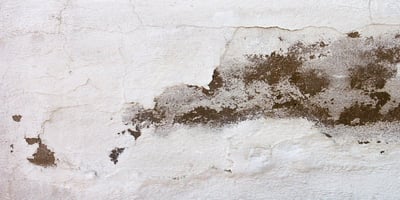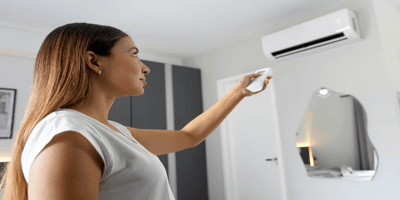What Factors Would Increase Poor Indoor Air Quality?
Indoor air quality plays a pivotal role in our air conditioning and creating a healthy and comfortable living environment. As we spend a significant portion of our lives indoors, the quality of the air we breathe has a direct impact on our well-being. In recent years, a growing concern has emerged regarding the detrimental effects of moisture and mold on indoor air quality.
Moisture and mold are insidious culprits that can silently compromise the air we breathe within our homes and workplaces. Understanding the significance of these factors is crucial for maintaining a safe and habitable indoor environment. This article delves into the intricacies of moisture and mold, exploring their adverse health effects both on indoor air quality and shedding light on the importance of addressing these issues proactively. Join us on a journey to uncover the hidden threats that lurk within our living spaces and learn how we can safeguard our indoor air quality for the benefit of our health and overall well-being.
Correlation Between Humidity Levels and Mold Growth
Humidity plays a pivotal role in the development of mold. Mold thrives in environments with elevated moisture content, typically above 60%. As humidity levels rise, especially in poorly ventilated areas, condensation occurs on surfaces, providing an ideal breeding ground for mold. Understanding this correlation emphasizes the importance of both mechanical ventilation and maintaining optimal humidity levels to prevent mold infestations. In the next sections, we will explore the consequences of mold on poor indoor air quality, and delve into strategies for both indoor concentrations and identifying and mitigating moisture-related issues within buildings.
Consequences of Mold Formation on Health
Mold, when left unchecked, can have profound and adverse effects on both indoor and outdoor air- quality and the health of occupants. Understanding these consequences is crucial for fostering a safer living environment.
Impact of Mold on Indoor Air Quality
Mold releases microscopic spores into the air as part of its reproductive cycle. These spores, when present in indoor air, significantly degrade its quality. As mold spores disperse, they can be inhaled by occupants, leading to a range of health issues.
Health Risks for Occupants
Mold exposure is associated with a myriad of health risks, particularly for individuals with compromised immune systems, allergies, or pre-existing respiratory conditions. Prolonged mold exposure can exacerbate existing health problems and potentially lead to the development of new ones.
Allergies and Respiratory Problems Associated with Mold Exposure
Mold spores are potent allergens and can trigger allergic reactions in susceptible individuals. Common symptoms include sneezing, coughing, watery eyes, and skin irritation. Moreover, mold can exacerbate respiratory conditions such as asthma. Individuals with asthma may experience increased frequency and severity of asthma attacks when exposed to mold.
Respiratory problems extend beyond allergic reactions, with mold exposure linked to more severe conditions such respiratory diseases such as bronchitis and pneumonia. Additionally, mycotoxins produced by certain types of mold can have toxic effects on the respiratory and immune systems, even lung cancer, further complicating the health implications associated with mold exposure.
Understanding the human health risks associated with mold underscores the urgency of addressing and mitigating mold-related issues. In the subsequent sections, we will explore methods for identifying signs of moisture and mold, as well as strategies for preventing and remediating these indoor air quality concerns.
Identifying Signs of Moisture and Mold
Detecting moisture and mold issues early is essential for maintaining indoor air quality and preventing potential health risks. Here are key methods to identify signs of moisture and mold within your living or working spaces.
Visible Signs of Mold Growth:
- Surface Discoloration: Mold often appears as patches of discoloration on walls, ceilings, or other surfaces. These can vary in color, including black, green, or brown. Regularly inspecting visible areas can help spot mold growth in its early stages.
- Texture Changes: Mold can alter the texture of surfaces. Look out for areas that appear fuzzy, slimy, or have a powdery texture, as these may indicate the presence of mold.
Odor and Discoloration as Indicators:
- Musty Odor: Mold emits a distinct musty odor. If you notice an unpleasant and lingering smell, especially in enclosed spaces or areas with poor ventilation, it could be a sign of hidden mold growth.
- Stains and Discoloration: Water stains on ceilings or walls are indicative of past or ongoing moisture issues. Discoloration, even if not directly visible as mold, may suggest an environment conducive to mold growth.
Using Technology to Detect Hidden Moisture and Mold:
- Moisture Meters: Utilize moisture meters to measure the moisture content in building materials. Elevated levels can indicate potential water intrusion and the risk of mold growth.
- Infrared Cameras: Infrared technology can reveal hidden moisture behind walls or in ceilings. Wet areas appear cooler than dry ones, making infrared cameras effective tools for identifying concealed moisture.
- Air Quality Monitors: Employ air quality monitors to assess the concentration of mold spores in the air. Elevated levels may indicate an active mold infestation.
Being proactive in identifying these signs allows for timely intervention and mitigation. In the following sections, we will explore preventive measures to control moisture levels and strategies for effective mold remediation.
Preventing Moisture and Mold Issues
To safeguard indoor air quality and mitigate the risk of mold formation, implementing proactive measures with household cleaners to control moisture is paramount. Here are key strategies for using air cleaners and preventing moisture and mold issues within indoor environments.
Proper Ventilation Strategies:
- Ventilation Systems: Ensure that your building is equipped with effective ventilation systems. Proper ventilation helps to circulate air, reducing humidity levels and preventing stagnant, moisture-laden air.
- Use Exhaust Fans: Install and use exhaust fans in areas prone to high humidity, such as bathrooms and kitchens. These fans help expel moisture-rich air to the outside.
Controlling Indoor Humidity Levels:
- Maintain Optimal Humidity: Keep indoor humidity levels between 30-50%. This range inhibits mold growth and creates an inhospitable environment for spore proliferation.
- Dehumidifiers: In particularly humid climates or areas with inadequate ventilation, use dehumidifiers to extract excess moisture from the air.
Regular Maintenance Practices to Prevent Moisture Accumulation:
- Inspect and Repair Leaks: Regularly inspect roofs, windows, and plumbing for leaks. Promptly repair any identified issues to prevent water intrusion.
- Seal Windows and Doors: Ensure windows and doors are properly sealed to prevent rainwater or condensation from entering the building.
- Address Poor Drainage: Improve drainage around the foundation to redirect water away from the building. Poor drainage can lead to moisture seepage into basements and crawl spaces.
Monitor Indoor Plants:
- Proper Watering: Avoid overwatering indoor plants, as excess water can contribute to increased humidity levels. Place trays under plant pots to catch excess water and prevent it from reaching surfaces.
Addressing Plumbing Issues:
- Regular Plumbing Inspections: Conduct regular inspections of plumbing systems. Leaking pipes can introduce moisture into walls and ceilings, providing a conducive environment for mold growth.
By implementing these preventive measures, you can significantly reduce the risk of moisture-related issues and mold formation. In the subsequent sections, we will explore effective strategies for mold remediation and delve into the role of building materials in preventing mold growth.
Addressing Mold Remediation
When mold is identified, prompt and effective remediation is crucial to restore poor indoor and air quality and prevent further health risks. Here are essential steps for addressing mold remediation.
Effective Mold Removal Techniques:
- Isolation of Affected Areas: Begin by isolating the areas affected by mold to prevent spores from spreading to uncontaminated areas.
- Proper Ventilation: Use fans and open windows to enhance ventilation during remediation. This helps disperse airborne mold spores and reduces concentrations.
- Cleaning Surfaces: Scrub mold off surfaces using appropriate cleaning agents, such as a mixture of water and mild detergent. For more stubborn mold, consider specialized mold cleaners.
- Removal of Contaminated Materials: In severe cases, it may be necessary to remove and dispose of materials heavily infested with mold, such as drywall or insulation.
Importance of Professional Remediation:
- Assessment by Professionals: Engage certified mold remediation professionals to assess the extent of mold infestation. Professionals can identify hidden mold, assess health risks, and determine the appropriate remediation strategies.
- Safety Protocols: Professionals follow safety protocols, including the use of protective gear, containment measures, and proper disposal of contaminated materials. This ensures a thorough and safe remediation process.
- Preventing Cross-Contamination: Professional remediation minimizes the risk of cross-contamination by employing specialized equipment, such as HEPA filters, to capture mold spores.
Preventing Mold Recurrence:
- Identify and Address Underlying Issues: Determine and address the root cause of the moisture problem that led to mold growth. This may involve fixing leaks, improving ventilation, or enhancing insulation.
- Regular Inspections: Conduct regular inspections to identify any signs of recurring moisture or new mold growth. Early detection allows for prompt intervention and prevents the issue from escalating.
- Use Mold-Resistant Materials: Consider using mold-resistant building materials in areas prone to moisture, such as bathrooms and basements. These materials are designed to inhibit mold growth.
Effectively addressing mold remediation not only restores poor indoor air quality but also prevents the recurrence of mold-related issues. In the final section, we will explore the role of building materials in mold prevention and how educating occupants synthetic building materials contributes to maintaining a healthy indoor environment.
The Role of Building Materials in Mold Prevention
The selection of appropriate building materials is a critical factor in preventing mold growth and maintaining indoor air quality. Here's a closer look at the role of building materials in mold prevention and indoor air pollutants.
Choosing Mold-Resistant Materials:
- Mold-Resistant Paints and Coatings: Opt for paints and coatings that have mold-resistant properties. These materials contain additives that inhibit mold growth on surfaces.
- Mold-Resistant Drywall: Consider using mold-resistant drywall in areas prone to moisture, such as bathrooms and kitchens. This type of drywall has a moisture-resistant core that discourages mold development.
Evaluating the Impact of Construction Materials on Moisture Retention:
- Moisture-Resistant Insulation: Use insulation materials that resist moisture absorption. Moisture-resistant insulation helps prevent the buildup of damp conditions conducive to mold.
- Ventilated Facades: Incorporate building designs that promote ventilation, such as ventilated facades. Adequate ventilation reduces the risk of moisture accumulation within the building envelope.
Building Practices for Mold Prevention:
- Proper Installation: Ensure proper installation of windows, doors, and other building components to prevent water intrusion. Improperly sealed openings can lead to moisture penetration and subsequent mold growth.
- Effective Drainage Systems: Implement effective drainage systems around the foundation to redirect rainwater away from the building. Poor drainage can result in water seepage into basements, creating favorable conditions for mold.
- Ventilation Systems: Design and install effective ventilation systems to promote air circulation. Well-ventilated spaces discourage stagnant, moisture-laden air that fosters mold growth.
Regular Maintenance and Inspection:
- Scheduled Inspections: Conduct regular inspections of building materials to identify signs of wear, damage, or water infiltration. Promptly address any issues to prevent the onset of mold-friendly conditions.
- Repair and Replacement: If building materials show signs of mold or water damage, promptly repair or replace them. Timely action can prevent the spread of mold and maintain a healthy indoor environment.
Educating architects, builders, and homeowners about the importance of selecting mold-resistant materials and implementing effective building practices is essential for preventing mold-related issues. In the concluding section, we will explore the role of occupant habits in managing indoor moisture and ensuring a sustained healthy living environment.
Educating Occupants on Moisture Management
Creating awareness among occupants about the relationship between daily habits, weather conditions and indoor moisture levels is crucial for maintaining a healthy living environment. Here are key aspects to focus on when educating occupants about moisture management.
Raising Awareness about the Connection between Habits and Moisture Issues:
- Proper Ventilation Practices: Emphasize the importance of proper ventilation habits, such as using exhaust fans while cooking or showering and ensuring that ventilation systems are functioning optimally.
- Promptly Addressing Leaks: Encourage occupants to report and promptly address any leaks or water damage they observe. Timely intervention can prevent the development of moisture-related problems.
Providing Guidelines for Preventing Excessive Indoor Humidity:
- Optimal Humidity Levels: Educate occupants about the recommended indoor humidity levels (30-50%) and the impact of exceeding these levels on mold growth and indoor air quality.
- Effective Use of Dehumidifiers: Guide occupants on the proper use of dehumidifiers in areas with high humidity. Emphasize the importance of regularly emptying the water reservoir to maintain efficiency.
- Avoiding Overwatering Plants: Remind occupants not to overwater indoor plants, as excess water can contribute to elevated humidity levels.
Proper Maintenance Practices:
- Regular Cleaning: Advocate for regular cleaning routines, as dust and dirt can contribute to moisture-related issues. Mold can feed on organic matter, and maintaining a clean environment helps reduce potential food sources.
- Air Circulation: Encourage the arrangement of furniture and belongings to allow for adequate air circulation. This helps prevent the accumulation of moisture in confined spaces.
Responding to Changes in Conditions:
- Monitoring Humidity: Encourage occupants to use humidity monitors to keep track of indoor humidity levels. Sudden increases may indicate potential issues that need attention.
- Reporting Issues: Establish a reporting system for occupants to notify management or maintenance personnel promptly if they observe any signs of moisture problems or mold.
By fostering an understanding of the impact of daily habits on affecting indoor air quality and moisture levels, occupants can actively contribute to the prevention of mold growth and the maintenance of optimal indoor air quality. In conclusion, a collaborative effort between building professionals, occupants, and maintenance personnel is key to creating a healthy air conditioner and mold-resistant indoor environment.






































